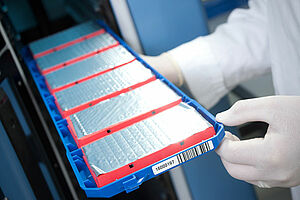How can microbiomes - including bacteria, archaeae, fungi, algae, protists and viruses - be "banked" and preserved for future generations? A team of scientists led by Dr. Matthew Ryan (CABI) came together to investigate this question. The paper is a result of the EU project MicrobiomeSupport, which wias coordinated by co-author Dr. Angela Sessitsch (AIT). The experts present their views in the journal ‘Trends in Microbiology’ and suggest that the current biobanking infrastructure is ‘fragmented and not prepared for the biobanking of microbiomes.’
Dr. Ryan, Curator of CABI's Genetic Resource Collection, saysid: “The microbiome research field is rapidly evolving, but the required biobanking infrastructure is currently fragmented and not prepared for the biobanking of microbiomes. The rapid advancement of technologies requires an urgent assessment of how biobanks can underpin research by preserving microbiome samples and their functional potential.”
Dr. Angela Sessitsch explains that there are two major questions that need to be answered when conserving microbiomes - what should be conserved and how can it best be preserved? Even the loss of a single microbial component during storage can completely change its composition and functionality. “The question about what to preserve is a controversial one, and ultimately serves not only to underpin research quality and the generation of new microbiome-sourced microbial products, which may also have commercial value, but also to allow for preservation during time of altered agricultural and medical practices and climate change”, she saysid. “Similarly, there is a need to ensure that products such as probiotics remain stable over time.”
Cryopreservation has been used as the gold standard for microbial storage since the 1960s. The greatest challenge is the development and evaluation of optimised methods for the conservation of microbiomes. Dr. Tanja Kostic (Competence Unit Bioresources at the AIT), in collaboration with a team of experts, has developed a concept to explore these issues for microbiomes in the context of the production of healthy food and a healthy environment. The expert explains: “The most important thing is to learn from other areas, such as human microbiome biobanking, and to find ways to connect and expand established resources and infrastructures.”



